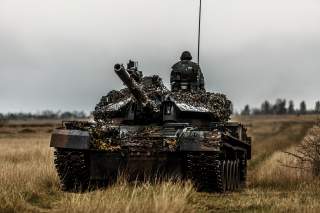Could NATO Stop a Russian Invasion of the Baltics?
One study from 2016 says no. What should America and its allies do about it?
Overall, the Russian military had roughly 766,000 active front line personnel in 2013 and as many as 2.4 million reserve forces, according to globalfirepower.com. During the Cold War, the Russian Army had as many as three to four million members.
By the same 2013 assessment, the Russian military is listed as having more than 3,000 aircraft and 973 helicopters. On the ground, Globalfirepower.com says Russia has 15-thousand tanks, 27,000 armored fighting vehicles and nearly 6,000 self-propelled guns for artillery. While the Russian military may not have a conventional force the sheer size of its Cold War force, they have made efforts to both modernized and maintain portions of their mechanized weaponry and platforms. The Russian T-72 tank, for example, has been upgraded numerous times since its initial construction in the 1970s.
Analysts have also said that the Russian military made huge amounts of conventional and nuclear weapons in the 80s, ranging from rockets and cruise missiles to very effective air defenses.
In fact, the Russian built S-300 and S-400 anti-aircraft air defenses, if maintained and modernized, are said to be particularly effective, experts have said.
In the air, the Russian have maintained their 1980s built Su-27 fighter jets, which have been postured throughout the region by the Russian military.
Often compared to the U.S. Air Force’s F-15 Eagle fighter, the Su-27 is a maneuverable twin engine fighter built in the 1980s and primarily configured for air superiority missions.
While many experts maintain that NATO’s size, fire-power, air supremacy and technology would ultimately prevail in a substantial engagement with Russia, that does not necessarily negate the Rand study’s findings that NATO would be put in a terrible predicament should Russia invade the Baltic states.
This story originally appeared in Scout Warrior.


